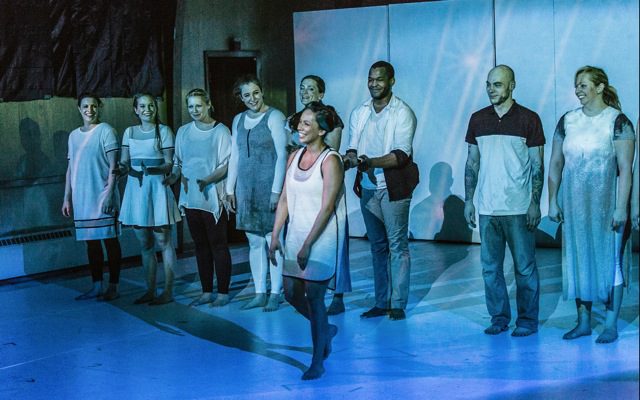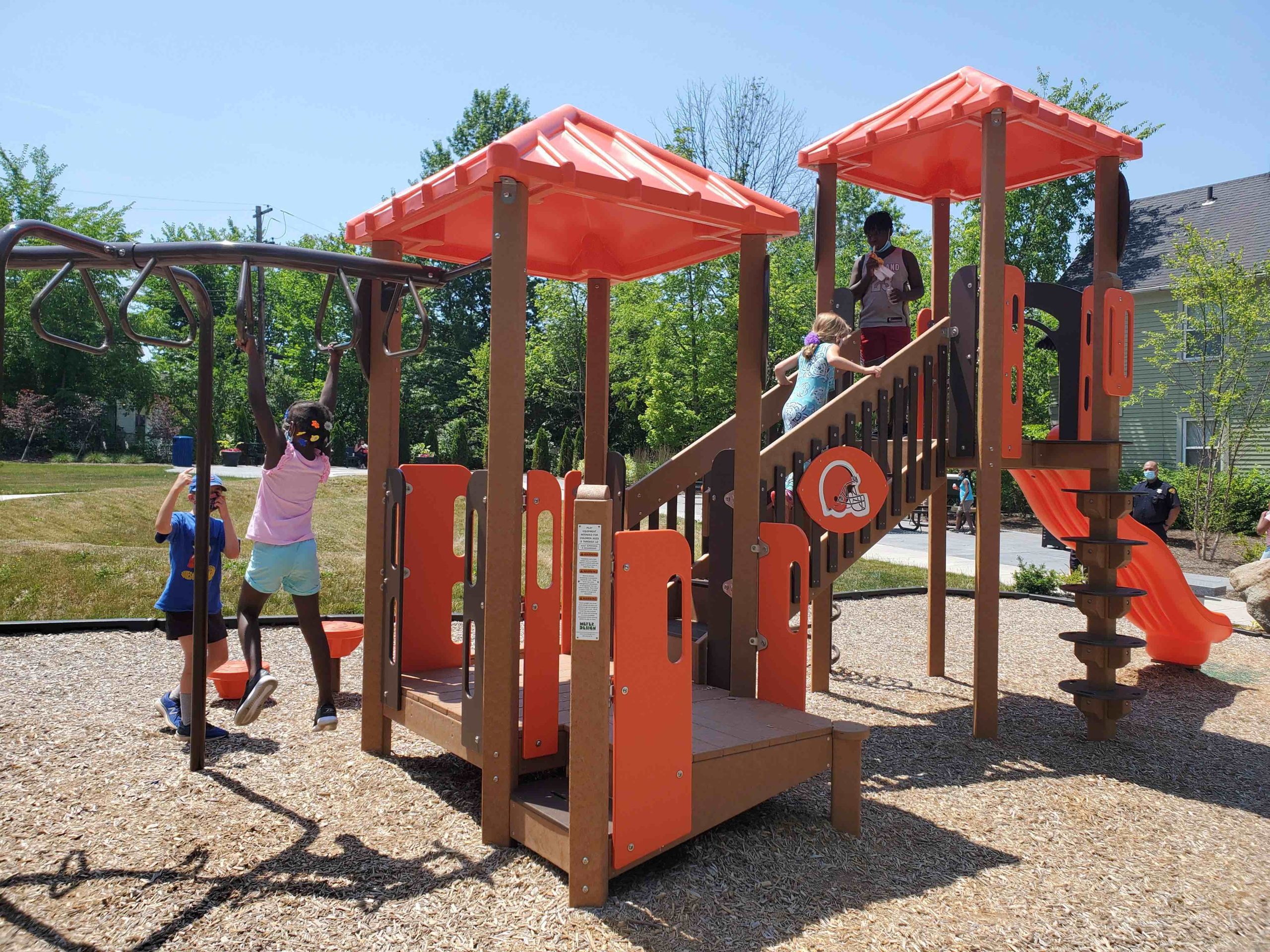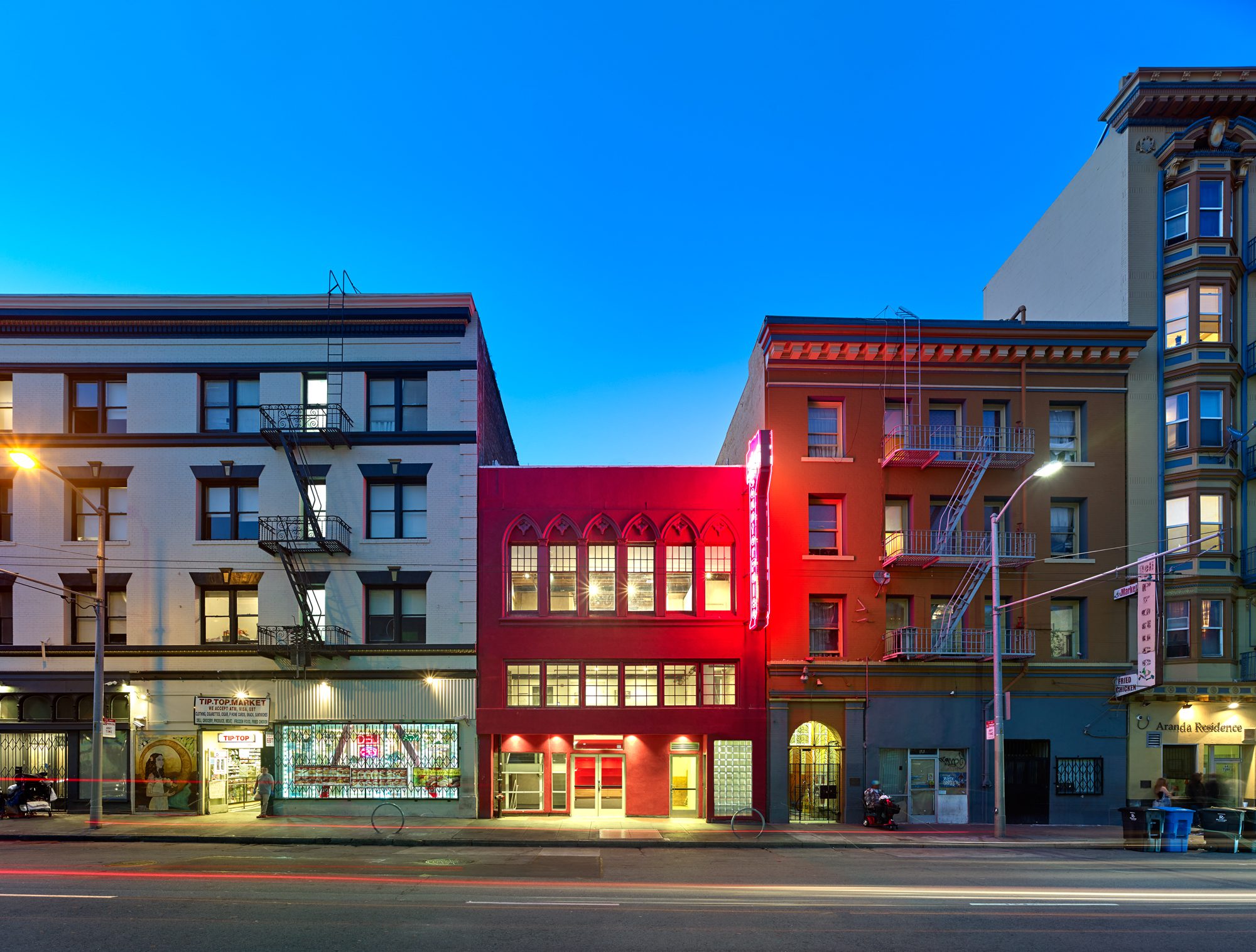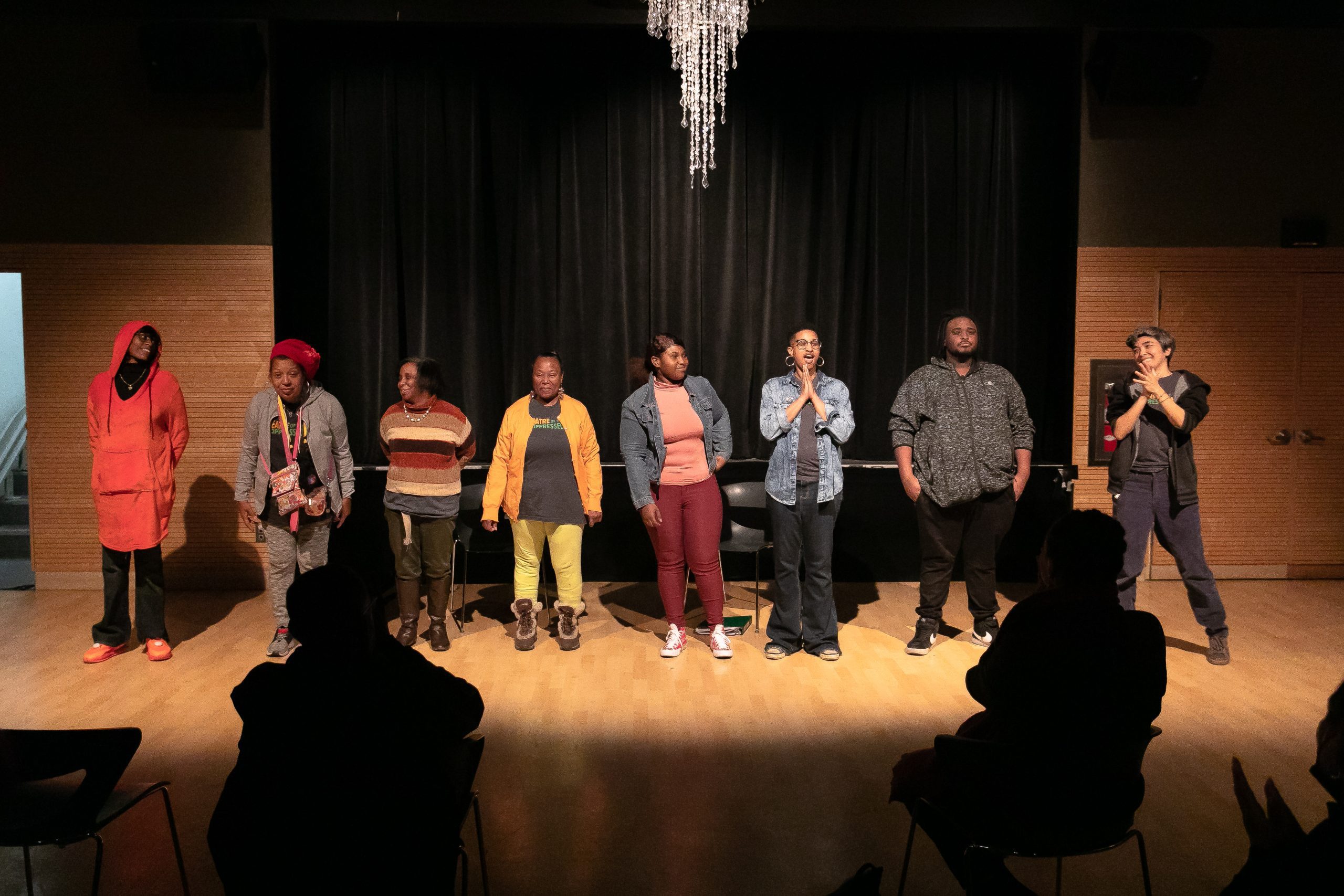
But these days, CIHA is just looking for someone who can design a bike rack. Not any bike rack though.
Yes, it should be durable and functional and interesting to look at, and not made of anything that might scratch the fender on someone’s ride. However, place is just as important as functionality and artistic merit. The artist chosen better know the local area well enough for their design “to draw on the unique character and history of Spenard,” the call says, including its people, culture, and history. That’s no simple task given the rich cultural patchwork of Spenard and greater Anchorage.
The call for proposals is the first time CIHA has ever posted anything on the CaFÉ. But if the next three years goes the way it hopes, it won’t be the last. With the support of a Community Development Investment (CDI) grant from ArtPlace America, which will provide $3 million in funding over a period of three years, CIHA is exploring ways of prioritizing creative placemaking as a development strategy and forging new partnerships in the arts and culture sector, all with the aim of better reflecting the enormous cultural diversity of the communities it serves. “We’re looking beyond the three years of the grant at how this becomes a sustainable practice,” says Sezy Gerow-Hanson, director of public and resident relations at CIHA. “We’re working on capacity and understanding how these sectors can work together.”
The Walk
According to photographer and Anchorage resident Oscar Avellaneda-Cruz, there’s a distinction to be drawn between “Anchorage before oil and Anchorage after oil.” Before oil, the community of Spenard was a town in and of itself, situated southwest of what is now downtown Anchorage. Early on, the area was known for being home to a rowdy, rambunctious crowd that played by their own rules, a reputation that endured the test of time. “Spenard is the sleaziest part of Anchorage,” boasted the now-defunct Fly by Night Club website, “filled with bars, strip joints, liquor stores, and massage parlors.” In the 1970s, construction of the Trans-Atlantic Pipeline system boosted growth in Anchorage. The population grew from 174,431 in 1980 to 226,338 in 1990—a surge of nearly 30 percent—and Spenard was swallowed up in the expansion. The result, says Avellaneda-Cruz, is a community of diverse backgrounds and cultural identities, “interesting pockets of creative people, but people who also express themselves differently.” This broad spectrum was evident at an October 2015 town hall kick-off CIHA held to celebrate its selection as a CDI grantee. During the question-and-answer session, one resident put the question very simply to ArtPlace Deputy Director Lyz Crane: “How do you define Spenard?”
The initial phase in the three-year grant period is a process of cultural asset mapping, when each organization in the CDI program sets out to get to know the people, events, or places in its community that could serve as potential resources as it explores ways of integrating arts and culture into its work. How each organization gathers that knowledge varies widely and depends very much on the place: in some areas, it might be knocking on doors or sending out surveys; in others, it might be hosting a town hall meeting or community festival.
For CIHA, the first step in the process was to roughly establish the boundaries of the Spenard neighborhood. Then Avellaneda-Cruz, who joined CIHA as a consultant on the CDI program, hit the streets. He took a psychogeographic approach to researching Spenard, not necessarily looking for the quickest route from A to B, but instead observing how the physical environment guided his intuition and what emotional response being in different locations, whether a bike path or a park bench or an alley, evoked. He took photographs of anything he thought might be considered an asset: flags of different community groups, neighborhood parks, trail systems, “everything that basically allows people to move around the neighborhood in a nontraditional way, on bike or on foot,” Avellaneda-Cruz recalls.
He came back with some 750 images, which were then organized in 12 categories, like arts, businesses, or parks and recreation, to name a few. All the images were captioned with a description of what was in the image and where it was located. In addition to keeping visual records, Avellaneda-Cruz made a point of talking to people he happened to meet on his walks to understand what it was like to live there. “When I met people, I took their name and information because they could be helpful later on, to ask them questions and learn from them,” Avellaneda-Cruz says. “I walked really slowly and made myself available to everyone and anyone.”
During his walks, Avellaneda-Cruz kept an eye out for anything that might constitute a cultural asset, keeping in mind how subjective the concept can be. An abandoned parking lot, for instance, might not jump out as especially remarkable from the perspective of an urban planner, but that doesn’t mean an artist might not look at that same parking lot and imagine it as a fantastic performance space. Likewise, there may be more to a cultural asset than meets the eye, as Avellaneda-Cruz learned when he visited Rose’s Custom Tailoring and Alteration Shop, a neighborhood fixture since 1999, and realized that the local Korean radio station operated out of the second floor, right above the shop. The radio station was a key means of disseminating information among members of the Korean community in Anchorage—definitely an asset to add to the list.
The Dance
CIHA’s next step was to start building a pool of creative collaborators whose artistic practice reflected an interest in community development and social engagement. CIHA is participating in an effect to create a local arts council, recognizing that “that infrastructure would be helpful to an organization like ours,” explains Tyler Robinson, director of development Planning and finance at CIHA. “At the same time, we’re starting to recognize that there are artists and groups of artists who are well networked and those that are difficult to find.”
While ArtPlace has supported other projects in Anchorage in the past, these tended to be funds allocated to artists pursuing an individual project—an entirely different ballgame from building capacity in a community development organization.
“Our process has been a lot about one-on-one or one-on-three meetings with artists and creatives,” says Gerow-Hanson, “kind of this interesting dance of artists coming to us not really knowing what we’re doing with our Artplace CDI grant and us kind of reaching out to artists that we know of to discuss [the grant].” Artists often come to CIHA assuming that the ArtPlace funds are for re-granting and bring with them a proposal for an individual project that might not be the right fit for the aims of the CDI grant. But even if the proposal isn’t a fit, there’s still an opportunity for both sides to learn from and about each other. For CIHA, it’s a helpful way of gaining a better understanding of how artists approach the activation of a physical space. For artists, it’s an opportunity to learn how their work can serve the long-term goals of a community development organization. The process takes time, but what comes out of it is the basis for a partnership rooted in a shared vision.
“What we’re looking for is their vision, their adaptability, their ability to see what we’re trying to do,” says Gerow-Hanson. “We [at CIHA] are also dreamers and doers, if you think about developing raw land. So we’re looking for that vibe. We want a coalition of people who are artists and creatives, who get the work that we do, and who want to work with us to do something cool.”
One such artist is Chad Taylor of Intrinsic Landscapes, a planning, design, and construction practice based in Anchorage. Taylor and partner Vania Hawkins approached CIHA in November 2015 with their idea for a project called “Benches for All.” With support from the Anchorage Park Foundation, the plan was to design and construct three site-specific communal seating modules in three different sites in the city. Among the proposed locations was a trail situated just next to Loussac Manor, a CIHA community. Taylor reached out to Sezy Gerow-Hanson and Tyler Robinson at CIHA to see if the housing authority might come on board as a partner for the project. While CIHA opted not to partner on that particular proposal, sharing the idea laid the groundwork for potential collaborations in the future. “As landscape designers/artists, our feeling is that landscape is about people,” says Taylor. “So getting the opportunity to attempt to align with CIHA and try to see how the community responds to various design and placemaking strategies is an invaluable opportunity.”
The connection deepened with the closure of the last adults-only establishment in Anchorage in December 2015. The establishment will soon be the site of an independent bookstore and café called Writers’ Block Bookstore. But before demolishing the structure and building the bookstore, Writers’ Block put out a call for proposals to transform the space through a series of temporary creative interventions.
Taylor came across the call and was immediately interested in the idea of, as he puts it, “using controlled demolition as a way of erasing boundaries of very private (and what had been sleazy and shady) space and public space.” Instead of simply knocking down the building and putting something else in its place, using art to slowly re-invent the space would allow the community to witness and even take part in turning what had been an adults-only establishment into a cultural asset. “There was something about opening up those secretive spaces of the private peep show booths and letting light into the building,” says Taylor. “Letting the building breathe.”
Taylor credits writer and community organizer Bruce Farnsworth and artist Sheila Wyne of The Light Brigade—a independent collective of artists whose mission is “to forever change the way our fellow citizens see and relate to familiar places in their everyday environment” —with the idea of bringing together local artists to occupy the building, and Val Schvonkurah for heading the community engagement aspect of the project. During April 2016, “Transforming ADULTS ONLY” (TAO) invited the community to experience and re-imagine the space through installations and exhibits, murals, storytelling, and other family friendly events.
Meanwhile Intrinsic Landscapes began the process of slowly demolishing the building, turning the re-invention of space into a performance in and of itself: “We were able to create several focused incisions into the building, one of which allowed a TV with a looping video collage of time lapse imagery of flowers blooming—alluding to the rebirth of the site,” says Taylor. “We were also able to collaborate with other participating artists in making incisions that allowed viewers from the outside of the building [to] ‘peep’ into the building and view their installations—fostering this inside/outside connectivity.”
Through the CDI grant, CIHA financially sponsored TAO and took the opportunity to observe firsthand how artists use creative practice to engage local communities. TAO further underscored how valuable access to space can be for artists, even a space that might not seem desirable or even inhabitable. Jayson Smart, senior program officer at Rasmuson Foundation, says space for artists is a rare commodity in Anchorage. “One of the critical issues in Anchorage within the arts community is a general lack of space for artists to converge and have opportunities around cultural production,” Smart says. “There’s a significant lack of available studio space for artists to work. We don’t have a major arts center in the more conventional way that you might think.” The CDI grant has prompted CIHA to look at space from an artist’s perspective, widening the scope of what might be perceived as an asset.
One such space is Anchorage Love Church, or “The Church of Love” on Spenard Road. CIHA purchased the abandoned property, formerly a Korean church, with the intention of tearing down the old structure and building offices in its place. But local artists had a few ideas of their own. “There were a couple of ArtPlace-funded projects taking place in the community that needed temporary space for staging large-scale exhibits,” Smart recalls. “Even before CIHA was selected for ArtPlace funding, some of the artists involved in these projects asked CIHA to use that church as project space.” Once enough construction work was done on the structure to ensure it was code compliant, artists began to use the space for a variety of workshops and projects, compounding the network of new relationships CIHA had formed.
Among the major projects staged at the Church of Love is the 100 Stone Project, a social art piece led by local artist and educator Sarah Davies. From 2014 to 2015, Davies and her team collected the stories of Alaskans with a history of mental and emotional health challenges, and mobilized artists, models, and community members to assist in the creation of 85 life-sized statues sculpted in plaster, each one representing some aspect of emotional trauma. The sculptures were erected on the shore of Cook Inlet where they appeared to be walking into the cold waters—a visually stunning metaphor for what it means to suffer from emotional trauma and an urgent call to break the stigma around mental illness. The Church of Love provided Davies with space to complete and exhibit the statues in Fall 2015 before they were transported to the shore.
For Avellaneda-Cruz, the 100 Stone Project stands out as an example of what CIHA aims to achieve through the CDI program, fusing artistic practice and social engagement through community-wide participation. “That project was executed at such a community level. I saw it be carried through by many hands and many people,” Avellaneda-Cruz recalls. “The artist herself really embodies that spirit, being able to be both a resource and educational point for other members of the community to talk about their own issues with mental health through art and other volunteer aspects of the project. That’s building community.”
The Future
It’s been an eventful year and it’s still only the beginning for CIHA. The call for a bike rack design is an extension of the cultural asset mapping process, a way of learning how to connect with artists and exploring opportunities to work with local businesses in Spenard to bring the project to scale. But there’s more in the works. ArtPlace has had a hand in connecting CIHA with organizations outside of Anchorage that have managed to build the capacity they need to embed the arts into their work. This has helped provide some guidance in finding the delicate balance between trying new approaches and still being clear about what the expectations for those new approaches are. “The premise of ArtPlace and some of the examples they shared is when you’ve brought creative people and artists into a process early on, you can go places you never envisioned,” Robinson explains. The key take-away is to “be intentional, but know that you’re open to going different directions,” even if the destination ends up being different than what you originally envisioned.
The Cook Inlet Housing Authority is one of six organizations selected to receive multiyear grants from ArtPlace America through the Community Development Investments (CDI) program. The program was geared to organizations that have not previously used arts and culture strategies in their community development work to help them integrate new tools and approaches and build new partnerships.
Want to learn about the other organizations that were selected for the CDI program? We’ve profiled two other grantees—the Little Tokyo Service Center in Los Angeles, California, and the Southwest Minnesota Housing Partnership in Slayton, Minnesota.





Comments